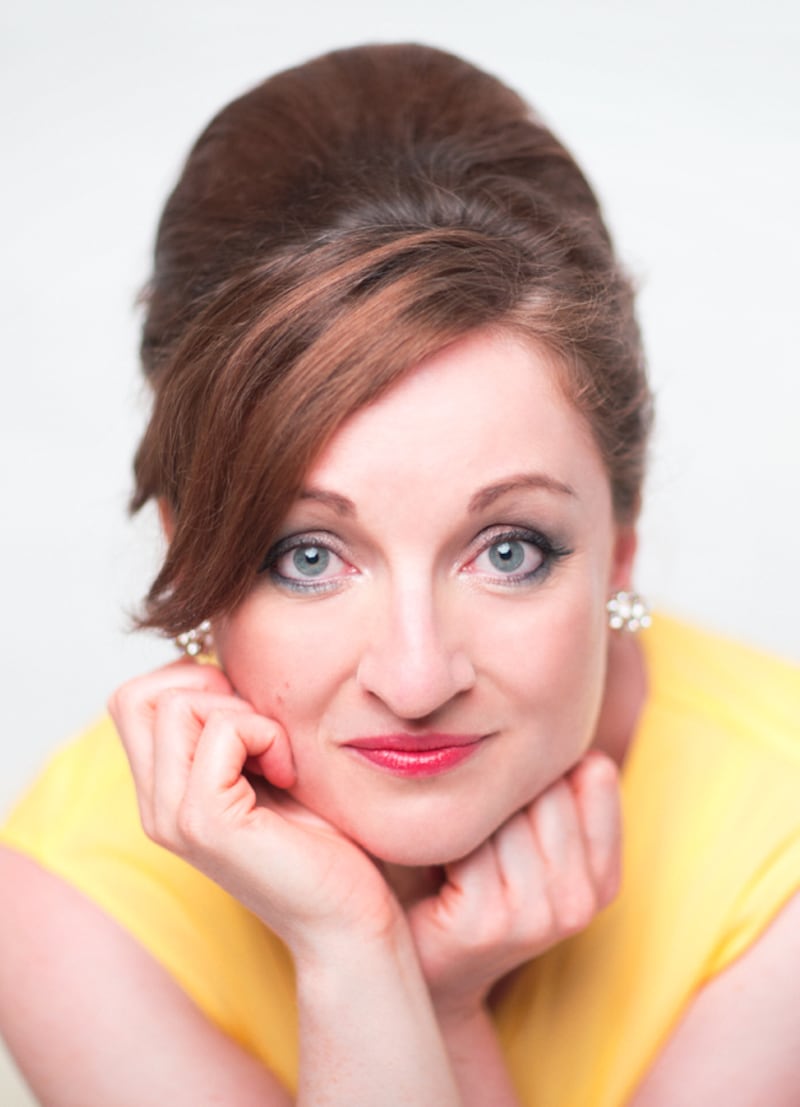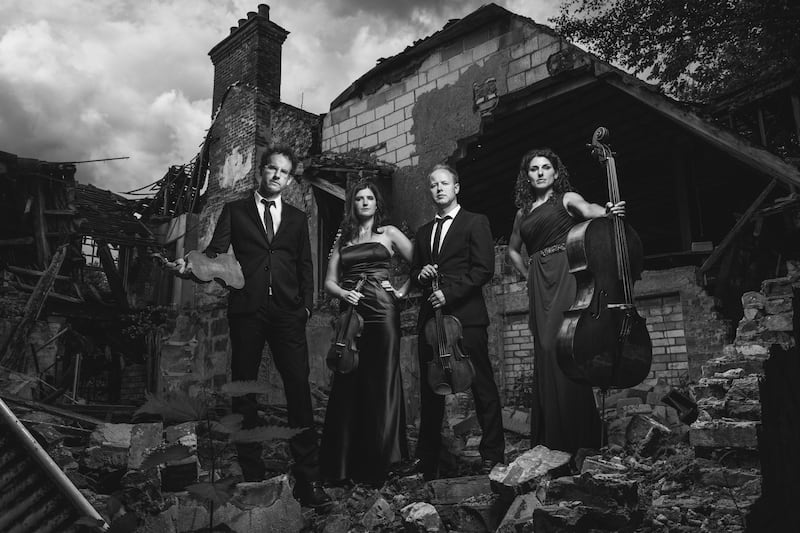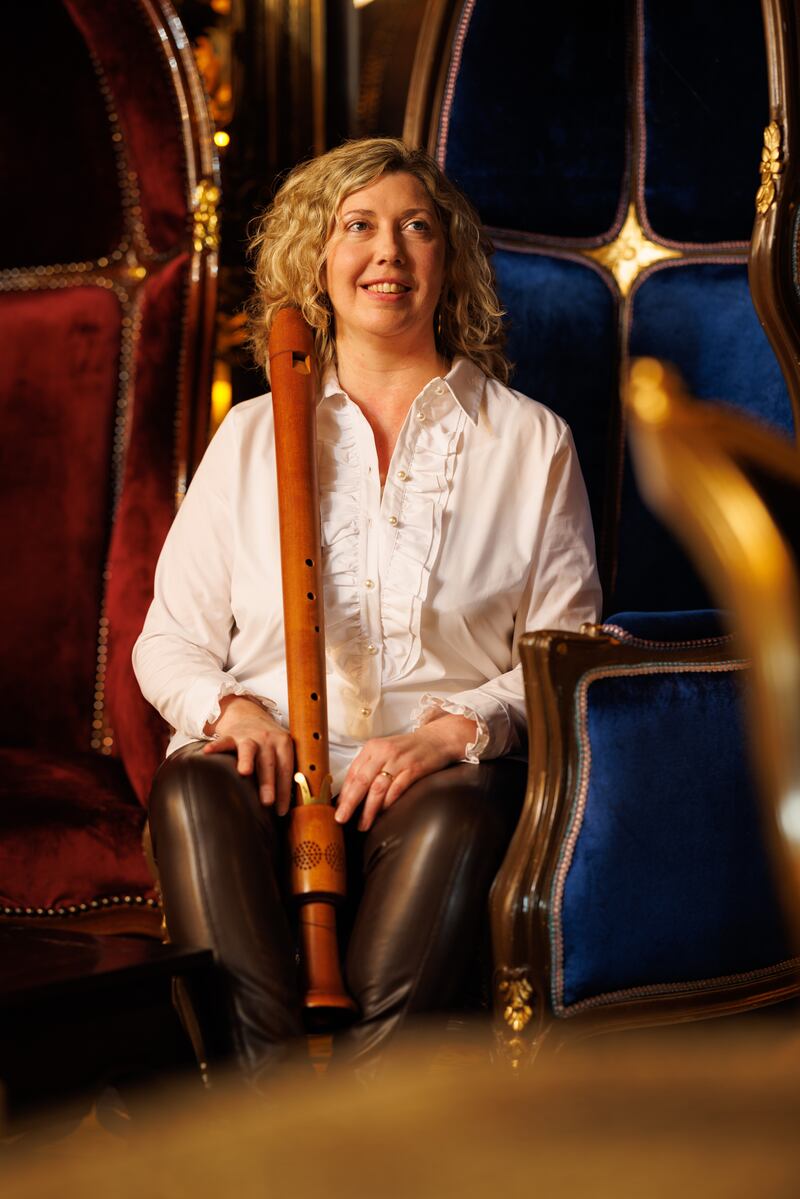Violinist Johnny Gandelsman’s Kilkenny Arts Festival performance of Bach’s suites for solo cello was a marathon. Gandelsman stood and performed his own transcription of all six suites, in sequence without an interval, in a late evening concert at the Black Abbey. And the audience sat immobile for nearly two hours in what has to be one of the least comfortable places in the country for listening to music.
The idea of highlighting the differences between cello and violin seems to be at the heart of his approach. The resonant sounds of the cello linger in the air in the way the sound of the violin does not. The violin is nimble in ways the cello is not. So Gandelsman focused on speed, aided by the fact that the cello suites are conceived quite differently to Bach’s works for solo violin. The movements are all either preludes or dance movements. There are no fugues as in the solo violin sonatas, and nothing of the scale or complexity of the Chaconne from the Partita in D minor for violin.
Gandelsman tripped through the works with ease, apparently on the assumption that playing dances faster and finding ways to introduce fleet, folksy, sometimes Irish-sounding embellishments is a sure way to make them more interesting. And he did all this with unfailing consistency and technical polish.
The effect, in musical terms, was rather like the use of a camera filter or post-production processing in a film to drain or add warmth for particular scenes or settings. In spite of all the skill, the music felt both whipped and straitjacketed, with whole areas of its natural expressive domain blocked off.
Joe Lynskey Disappeared case: ‘When he came out of the monastery he came out for the cause. And the cause executed him’
The Castle Spa at Dromoland Castle: The change was remarkable. My skin was like silk
Home care for older people: How does it work and who pays?
Emer McLysaght: Five lessons Dublin can learn from Zurich
It was interesting to hear the Sixth Suite, which Bach specified for a five-stringed instrument, played on a five-stringed violin, which introduced a novel timbre to the evening. And it was quite wonderful in itself to witness such a focused delivery. If only Gandelsman had not driven everything so relentlessly he would have sounded less like someone hell-bent on turning these works into musical tongue-twisters.
The sense of ideologically-driven playing was evident too when the string quartet Brooklyn Rider, of which Gandelsman is a founding member, joined forces with Swedish mezzo-soprano Anne Sofie von Otter, for an evening of Rufus Wainwright and Schubert at St Canice’s Cathedral.
The major work was Schubert’s Death and the Maiden Quartet, interspersed with songs from his cycle Winterreise in arrangements by Osvaldo Golijov, the whole topped and tailed with songs by Wainwright in arrangements by Brooklyn Rider’s Colin Jacobson.
The simplest way to describe the Death and the Maiden would be as Schubert on speed — needlessly, relentlessly, breathlessly fast, with some strange upendings of balance which saw accompanimental patterns shoved into the foreground for no apparent reason. A tour de force in its own way. The singing was more persuasive in Schubert than Wainwright, the voice, less full than of yore, somewhat disembodied from my seat quite close to the front.

St Canice’s was also the location for an Opera Gala with soprano Ailish Tynan and the Irish Chamber Orchestra under Stephen Barlow. The evening’s only weak spots were the Rossini and Mozart overtures (The Thieving Magpie and The Marriage of Figaro) which opened each half of the concert, when the orchestral playing was less than well-disciplined.
Tynan, who gave spoken introductions with the timing of an experienced comic, was in radiant voice in arias by Handel, Mozart, Puccini, Verdi and Lehár, the tone at once clear and luscious, situation and character well conveyed, and the highest notes always seeming within easy reach. In short, she was on the top of her very considerable form. Barlow and the orchestra were always supportive partners.
Festival director Olga Barry chose two Russian landmarks for this year’s programme. Chamber Choir Ireland sang Tchaikovsky’s Liturgy of St John Chrysostom in the Black Abbey, and the Carducci Quartet gave a complete cycle of Shostakovich’s string quartets at St John’s Priory.

I caught the second half of the Shostakovich cycle, from the mostly understated Seventh, written in 1960 in memory of the composer’s first wife Nina, to the unbroken sequence of seven slow movements that make up the Fifteenth of 1974.
The Carduccis were at their strongest in the earlier works, where they responded fully to the music’s harmonic tensions. They sounded less comfortable in works where the writing became heavily dissonant, but were in their element in passages where clearer searing intensity could win the day.
Paul Hillier’s account of the Tchaikovsky Liturgy was as full-toned and full-on as performances of this work need to be. Tchaikovsky was keenly aware of the Orthodox tradition he was writing for. As he told his patroness Nadezhda von Meck: “I am still bound to the church by strong ties, but on the other hand I have long ceased to believe in the dogma.” The richness of sound he sought is achieved through pared-back means — straightforward harmonies, hardly any counterpoint. Hillier’s singers gave their all to provide an extended and stirring immersion in choral resonance.

On a completely different scale, recorder player and recording producer Laoise O’Brien’s For the Record at Kilkenny Castle’s Parade Tower was a video presentation with spoken introduction and live music-making. It blended the history of the recorder as an instrument and the story of the career path of a versatile recorder player, who abandoned her instrument for an affair with the flute, before returning to the true way. O’Brien’s telling of her musical life story was informative, self-deprecating and witty.














